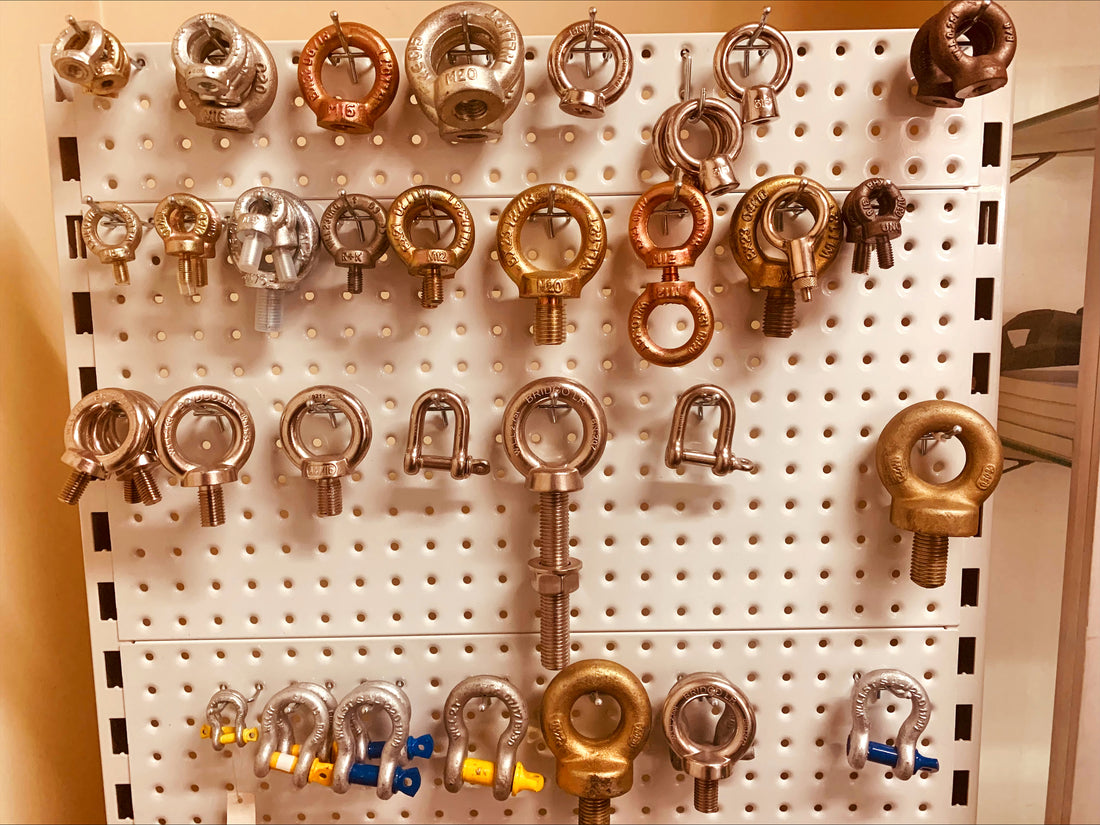It is recommended that all eyebolts used for lifting be of forged steel and be equipped with shoulders or collars. The plain or shoulderless eyebolt is fine for vertical loading but as soon as it is loaded at an angle it subjected to bending and the load it can safely carry is reduced.
Even when equipped with collars the Working Load Limit of eyebolts are reduced with angular loading. When installed, the shoulder must be at right angles to the axis of the hole and must contact the working surface. Washers may have to be used to ensure that the shoulders are firmly in contact with the working surface. The tapped hole for screwed eyebolts should have a minimum depth of one and one-half times the bolt diameter and must be a good fit for the screwed shank as part of the sling.
To keep the bending to a minimum, the loads should always be applied in the plane of the eye, never in the other direction. This is particularly important when bridle slings are used because an angular pull is always developed in the eyebolts, unless a spreader bar is used as part of the sling.
Never insert the point of a hook in an eyebolt, always use a shackle. Do not sling reeved through an eyebolt or reeved through a pair of eyebolts. One single leg only should be attached to each eyebolt.
When eyebolts cannot be kept in line with each other and all the same time tightened, then washers or shims may be inserted under the collars to permit the eyebolts being tightened and turned in line with each other.







